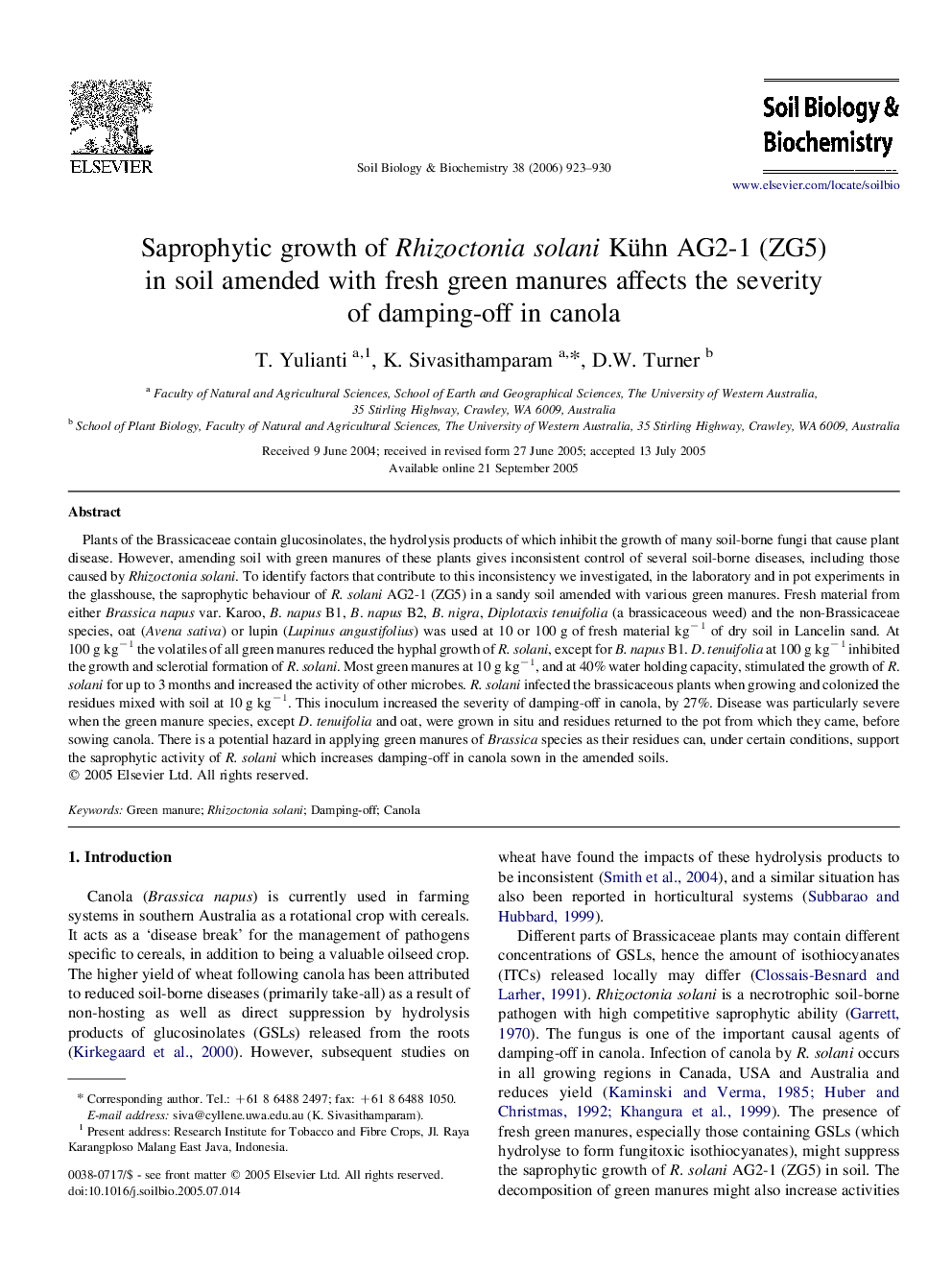| Article ID | Journal | Published Year | Pages | File Type |
|---|---|---|---|---|
| 2026322 | Soil Biology and Biochemistry | 2006 | 8 Pages |
Plants of the Brassicaceae contain glucosinolates, the hydrolysis products of which inhibit the growth of many soil-borne fungi that cause plant disease. However, amending soil with green manures of these plants gives inconsistent control of several soil-borne diseases, including those caused by Rhizoctonia solani. To identify factors that contribute to this inconsistency we investigated, in the laboratory and in pot experiments in the glasshouse, the saprophytic behaviour of R. solani AG2-1 (ZG5) in a sandy soil amended with various green manures. Fresh material from either Brassica napus var. Karoo, B. napus B1, B. napus B2, B. nigra, Diplotaxis tenuifolia (a brassicaceous weed) and the non-Brassicaceae species, oat (Avena sativa) or lupin (Lupinus angustifolius) was used at 10 or 100 g of fresh material kg−1 of dry soil in Lancelin sand. At 100 g kg−1 the volatiles of all green manures reduced the hyphal growth of R. solani, except for B. napus B1. D. tenuifolia at 100 g kg−1 inhibited the growth and sclerotial formation of R. solani. Most green manures at 10 g kg−1, and at 40% water holding capacity, stimulated the growth of R. solani for up to 3 months and increased the activity of other microbes. R. solani infected the brassicaceous plants when growing and colonized the residues mixed with soil at 10 g kg−1. This inoculum increased the severity of damping-off in canola, by 27%. Disease was particularly severe when the green manure species, except D. tenuifolia and oat, were grown in situ and residues returned to the pot from which they came, before sowing canola. There is a potential hazard in applying green manures of Brassica species as their residues can, under certain conditions, support the saprophytic activity of R. solani which increases damping-off in canola sown in the amended soils.
